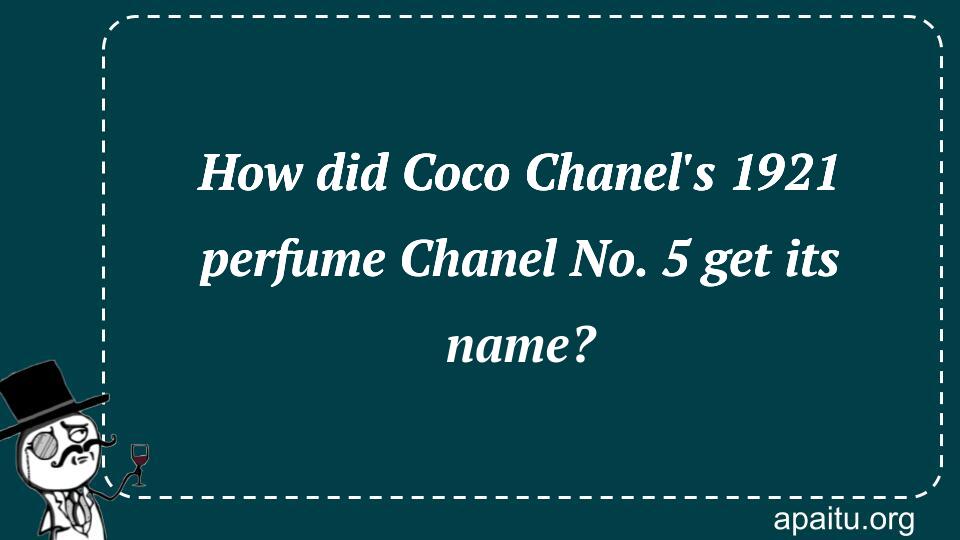Question
Here is the question : HOW DID COCO CHANEL’S 1921 PERFUME CHANEL NO. 5 GET ITS NAME?
Option
Here is the option for the question :
- Five was a fashionable number
- Named after a ship
- It was the fifth sample
- Slang used by an actor
The Answer:
And, the answer for the the question is :
Explanation:
In 1921, Chanel began producing its now-iconic fragrance, Chanel No. 5, marking the company’s expansion beyond the realm of fashion. Coco Chanel, a well-known fashion designer, desired a fragrance that was more tailored to her personality, so she created her own. She created 10 different test versions of her new scent in collaboration with the perfumer Ernest Beaux. In the end, Chanel decided to go with sample number five, which is also the name of this cherished fragrance.

In the world of perfumery, few fragrances have achieved the iconic status and timeless appeal of Chanel No. 5. Created by the legendary fashion designer Coco Chanel in 1921, this perfume revolutionized the industry and became a symbol of elegance and sophistication. The origin of its name, Chanel No. 5, is rooted in a simple yet significant fact—it was the fifth sample presented to Coco Chanel during the perfume development process.
Gabrielle “Coco” Chanel, known for her revolutionary approach to fashion, sought to create a fragrance that would embody her vision of modern femininity. She collaborated with the renowned perfumer Ernest Beaux to develop a scent that would be distinct, luxurious, and utterly captivating.
During the creative process, Beaux presented Chanel with a series of fragrance samples. The story goes that these samples were labeled with numbers, indicating the order in which they were presented. It was the fifth sample that caught Chanel’s attention, captivating her with its unique composition and olfactory beauty.
Impressed by the fifth sample’s exquisite blend of ingredients, Chanel declared, “I present my dress collections on the fifth of May, the fifth month of the year, and so we will let this sample number five keep the name it has already, it will bring good luck.” And thus, Chanel No. 5 was born.
The name “Chanel No. 5” carries a sense of simplicity and elegance, mirroring Coco Chanel’s own design aesthetic. By choosing to retain the original number assigned to the sample, she imbued the fragrance with a touch of mystique and authenticity. It was not a carefully crafted marketing strategy but a genuine recognition of the fragrance’s intrinsic qualities.
Chanel No. 5 quickly garnered attention and acclaim, captivating the world with its alluring scent. Its composition, a harmonious blend of floral and woody notes, was a departure from the heavier, single-note fragrances prevalent at the time. The distinctive combination of jasmine, rose, ylang-ylang, sandalwood, and vetiver created a symphony of aromas that captivated the senses.
The launch of Chanel No. 5 marked a turning point in the perfume industry. It introduced the concept of a signature scent, one that would become synonymous with a person’s identity. The fragrance became an integral part of Coco Chanel’s brand, representing her vision of modern femininity and empowering women to embrace their individuality.
Over the years, Chanel No. 5 has remained a symbol of luxury and refinement. It has transcended trends and fads, maintaining its allure and appeal across generations. The fragrance has undergone subtle modifications and variations, but the essence of Chanel No. 5 remains timeless.
The story behind the name of Chanel No. 5 adds to its mystique and legacy. It serves as a reminder of Coco Chanel’s uncompromising vision and her ability to recognize beauty and excellence in the simplest of things. The name itself has become synonymous with so